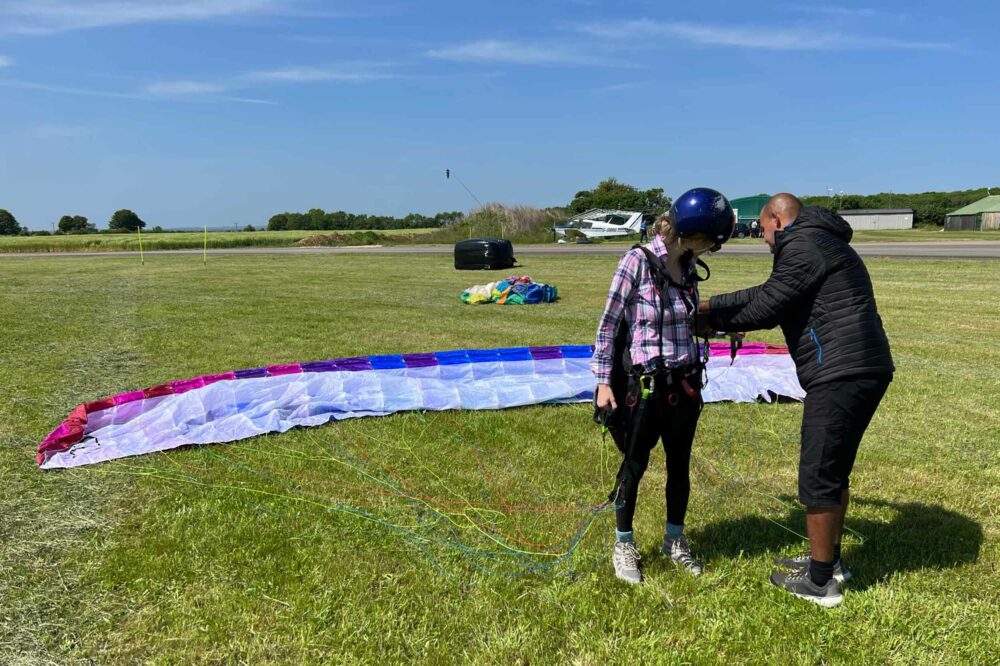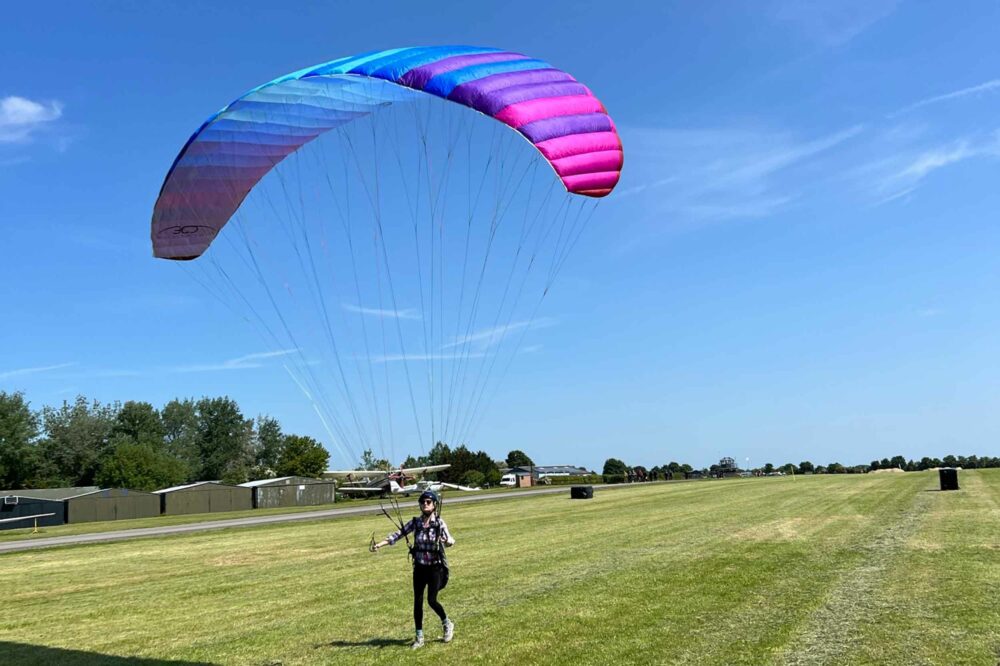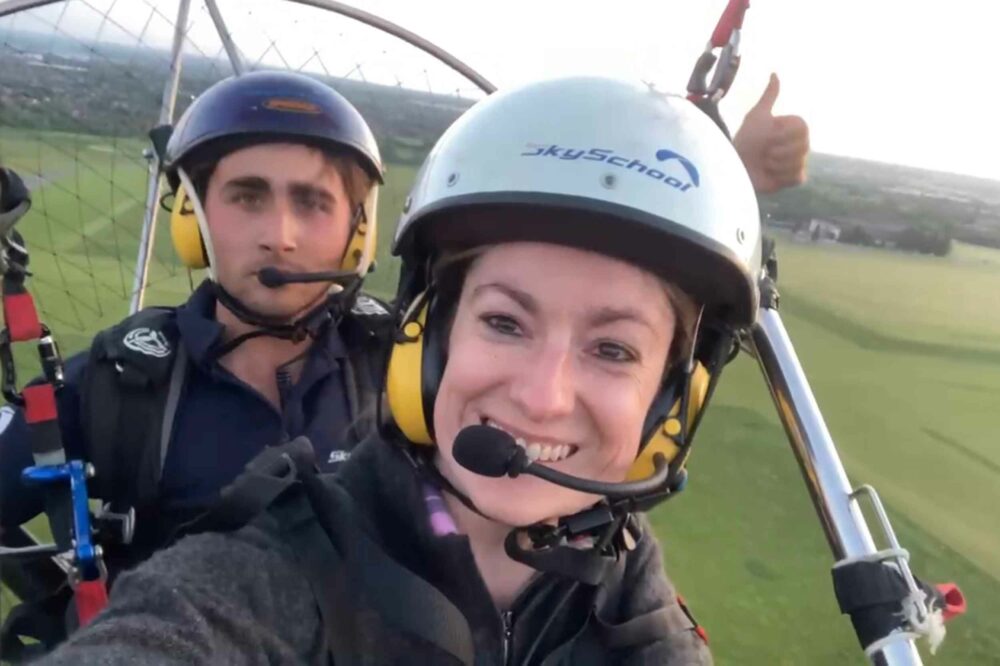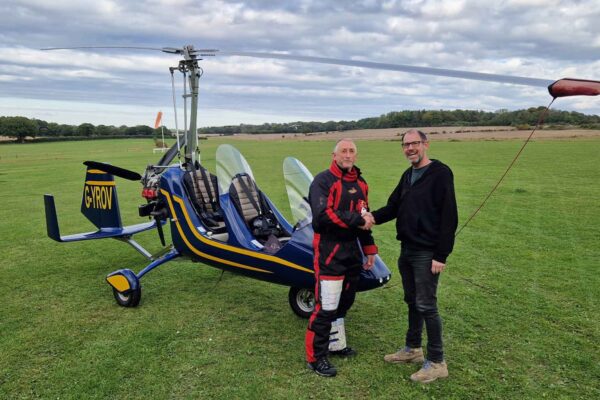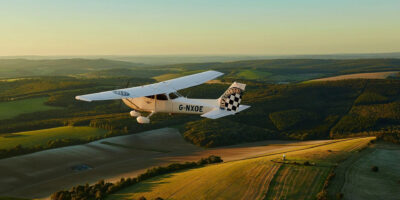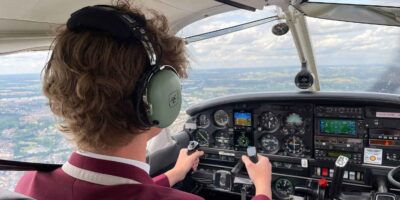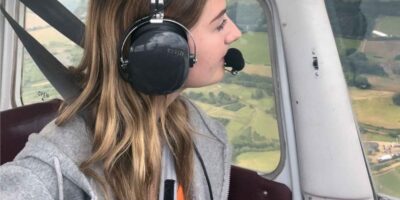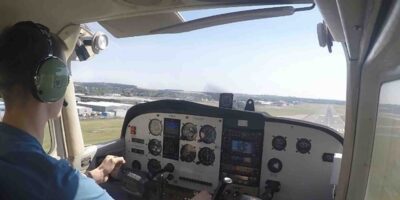Parawaiting
After being shown how to fold the wing to put it away, there then follows a stint of what I gather is known as “parawaiting”. It’s become too thermic and bumpy, so we need the sky to calm down a bit before any actual flying can happen. Inevitably, that means a patient wait for evening calm, but interestingly, we don’t want nil wind, as this makes take-off and landing difficult.
So we break for a long lunch and decamp to a local pub for a non-alcoholic interlude. Over tapas, I get the chance to chat to Alex about how he got into paramotoring – the answer, via skydiving – and to get his thoughts on what he sees as the future of this currently unregulated aviation sport. I get the impression that paramotorists enjoy the freedom that comes with being unregulated, but that they see the potential for better cooperation with other aviation sports that could come from being a more formally recognised and regulated activity.
Feeling restored after a good lunch, it’s back to the airfield. At 4pm we relocate to a corner of Bicester Airfield for the evening, as it’s not possible to paramotor at Hinton until the skydiving has finished. It’s a five-minute flight for us in a Robin DR400, and everyone else shows up by road in a convoy of about ten vehicles – including vans full of paramotors – some time later.
The wings and motors come out and those who are awaiting solo flights get the chance to practise some more ground handling ahead of their flights. As the light turns golden and the first students head off by themselves, I get an idea of what take-offs and landings involve for paramotors. Put simply: a lot of running.
My turn to fly
As the sun sinks ever closer to the horizon I’m beginning to think we’ll run out of time to do my tandem flight before daylight disappears and we need to fly out in the Robin. But at the eleventh hour my name is called, my harness goes on and I’m strapped into a metal frame that will attach me to my instructor, Bruce Daniels.
At just 19, Bruce is the youngest instructor I’ve ever flown with in anything, but watching him fly on his own before we go up together, I can immediately see that I’m going to be in safe hands. I have less faith in my own ability to stomach the confident corkscrews he performs as he comes in to land!
Strapped to Bruce, who’s strapped to the motor, which is strapped to the wing, we’re ready for the off. In the pre-flight briefing, I’m told to “run, and keep running” on take-off, and not to get into the ‘seat’ until Bruce taps me on the shoulder. Before landing, he’ll tap me on the shoulder again to tell me to get out of my seat.
My heart is racing as Alex and another instructor, Rushi, grab hold of the metal frame, get ready to pull and count down three, two one. They start running, Bruce and I start running, and there’s a few seconds of pushing hard on the frame to drag us and the paramotor forward – all the while Bruce and I trying desperately not to kick each other as we run.
Then all of a sudden, we grind to a halt: take-off aborted. The wind has swung round and it’s not going to work. It’s a bit of an anticlimax, but we reposition for another attempt and this time we’re successful.



